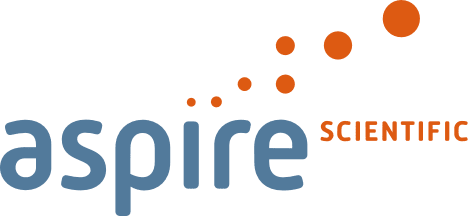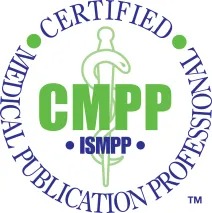The 20th Annual Meeting of the International Society for Medical Publication Professionals (ISMPP) took place once again in Washington, DC, from 29 April – 1 May with the theme ‘Storytelling: Its Art and Power’. Incorporating stories into medical publications can clarify complex ideas, build empathy, and establish trust, ultimately dispelling stigmas and misinformation. Over 700 attendees discovered the power of storytelling to unlock greater understanding in medical communications.
A summary of the second day of the meeting is provided below to benefit those who were unable to attend the meeting, and as a timely reminder of the key topics covered for those who did.
Summaries of Day 2 (continued)
Mastering the CMPP™ journey: a practical interactive session
KEY TAKEAWAY
- Celebrating 15 years of the ISMPP CMPP™ certification, the society’s professional qualification is more accessible than ever. A new online tool being introduced in 2025 will also streamline the recertification process for existing CMPP holders.
The Certified Medical Publication Professional™ (CMPP™) credential signifies a holder’s proficiency, experience, and commitment to excellence in the medical publications profession. In this session, a faculty comprising Dana Fox, Sharon Blimm, Faith DiBiasi, Ann Gordon, and Claudia Piano explored the value of the CMPP credential, described how to apply and prepare for the CMPP exam, and looked at how existing CMPPs can obtain recertification.
The value of CMPP certification
CMPP certification allows medical publications professionals to formally recognise their:
- expertise within the profession
- proficiency in good publication practices
- commitment to ethical and transparent data dissemination standards
- leadership in upholding and fostering integrity and excellence in medical publications.
The CMPP exam
Eligible candidates can choose to take the CMPP exam during March or September each year, and have the option to take the test at a Pearson VUE testing centre or online. The panel discussed the format of the exam and the requirements for taking it, before detailing the wealth of resources available online to assist candidates with their preparation for the exam. The CMPP Mentor Program was also highlighted, which matches a candidate with a qualified mentor who can support them through the certification process.
CMPP recertification
To keep their certification up to date, CMPPs can choose to recertify either by passing the CMPP exam during the last year of their current certification period or by obtaining sufficient continuing education (CE) credits. The panel discussed the types of activities that count towards CE credits and resources to find preapproved CE activities. Lastly, the faculty introduced the new ISMPP LearningBuilder platform to be launched in 2025, which will provide an easy and convenient tool to track CE credits and streamline the recertification process.
The ISMPP CMPP™ certification signifies a holder’s proficiency, experience, and commitment to excellence in the medical publications profession.
Member research oral presentations
KEY TAKEAWAYS
- AI successfully interprets how citing articles describe a clinical trial publication with adequate sentiment and context and could be a valuable addition to conventional publication metrics.
- Bespoke AI technology saves medical writers time and effort and helps their work to be understood by a broader audience without any degradation of accuracy.
- Inclusion of narrative elements linked to effective storytelling was associated with increased influence of review articles. Authors and publishers should explore ways to incorporate a more narrative style of writing.
Gary Burd (Caudex) introduced 3 oral presentations selected from a record-breaking 96 abstract submissions. Research was presented by Tomas Rees (Oxford PharmaGenesis), Walter Bender (Sorcero), and Stephen Towers (Healthcare Consultancy Group). All accepted abstracts are published in Current Medical Research and Opinion.
An AI approach to analyse the context of publication citations
Rees reminded us that, in addition to their generative abilities, AI models are a powerful analytical tool. A study of 100 Takeda-sponsored articles assessed the ability of AI models to help us summarise and understand what is being written about a clinical trial publication.
In addition to collating sentiment and location, the large language model could provide various levels of narrative summary and was able to explain its rationale for classifying statements as positive/neutral/negative.
The AI model demonstrated understanding of context: “treatment X was associated with minimal weight change, which is considered favourable and aligns with its safety profile”.
Rees concluded that similar approaches are widely applicable and could support insight analysis relating to a wide variety of questions and content sources (eg, news articles).
Examining the time- and effort-saving utility of tailored AI-tooling for abstract plain language summary development
Bender began by highlighting research showing that the scientific community is failing in its goal to reach patients with communications that are concise and easy to understand. The research presented by Bender aimed to assess if AI can help medical writers produce PLS, and if the output differs from content produced without AI assistance.
Bespoke AI assistance significantly reduced the time taken to write PLS by 41% versus writing without AI assistance. Bespoke AI assistance also made PLS easier to write, with the non-AI method requiring 20% more effort and the non-bespoke AI method requiring 16% more effort to complete versus the bespoke AI approach. AI-assisted PLS abstracts more accurately reflected the original scientific abstract than those written without AI assistance.
AI helped writers shape content to more effectively reach the intended target audience – the patient.
The most important finding, highlighted by the authors, was that AI-assisted PLS were the most suited for explaining research findings to patients based on content clarity. AI-assisted PLS had better readability than PLS written manually. Furthermore, AI-generated text not edited by a writer was easiest to read, achieving the often-recommended 8th grade reading level for PLS. In conclusion, AI helped writers shape content to more effectively reach the intended target audience – the patient.
Using storytelling to communicate complex science: a quantitative and qualitative assessment of the narrative properties of journal articles on genetic medicines
Towers presented the results of a pilot study that aimed to characterise the degree of narrativity in articles on genetic medicines and assess if a more narrative style increased the influence of the articles.
The study of 1,018 primary articles and 127 review articles used text analysis software to assess the structure of the articles’ abstracts regarding 3 narrative processes (staging, plot progression, and cognitive tension) and compared this to the typical story structure such as that of a novel or movie script. The article abstracts generally had low narrativity relative to conventional story structure, although review articles scored higher than primary articles.
The second phase of the analysis assessed the presence of an additional 11 narrative elements thought to underlie effective storytelling (including elements such as first-person narration, narrative hooks, emotional tone, and recommendation). Over 50% of abstracts contained an attention-grabbing hook in the title or first 3 sentences, and around a quarter included recommendations from the authors. Review article abstracts scored significantly higher for the presence of emotional tone compared than primary article abstracts.
Although a small pilot study, its findings suggest there is room to include more narrative elements in primary/review articles.
Debunking neuromyths: a neuroscience-based approach for more effective storytelling
KEY TAKEAWAY
- Understanding the many ways that people learn and reducing cognitive load is essential for effective scientific storytelling.
Emily Messina (IPG Health Medical Communications), Nathalie van Havre (American Society of Hematology), Mike Morrison (Curvenote), and Juliet Bell (Excerpta Medica) led a thought-provoking session debunking ‘neuromyths’ and exploring a neuroscience-based approach for effective storytelling.
Debunking ‘learning style’ neuromyths
The session began with an insightful introduction to neuromyths by Messina. Neuromyths are common misconceptions about the brain. For example, we all use both parts of our brain, despite the myth that people are either ‘logical left-brained‘ or ‘creative right-brained’. Science requires logic but is also inherently creative: creativity is needed to devise new questions to ask and methods to interrogate those questions. Interestingly, most delegates classified themselves as visual learners. Messina was quick to counter this finding by asking, if we are not auditory learners, then how can so many of us perfectly recite a song from our childhood? In a nutshell, learning is more complex than Visual-Auditory-Kinaesthetic learning styles.
How can we learn?
Next up, van Havre introduced the forgetting curve model of memory, which shows the decline of memory retention over time if no effort is made to maintain it. To learn, we need to modify the forgetting curve. van Havre gave 2 examples of how a presenter might achieve this:
- eliminate non-essential information from presentation slides
- include a story to foster emotional significance.
Concluding, van Havre introduced the importance of metacognition: the theory that people learn better when they have knowledge of what they will be learning, how they will learn, and how they will monitor their learning. For example, increased awareness of one’s thought process can lead to better critical thinking.
Increased awareness of ones thought process can lead to better critical thinking.
Cognitive load theory and universal design
Morrison began the next section with the idea that cognitive load can be reduced simply by depolarising less important information. Two versions of the same scientific manuscript were presented. The scientific content was identical, but in one, redundant and less important information, such as the journal’s logo, was removed to make space for the most important details – a process known as ‘weeding’.
Another strategy for reducing cognitive load is ‘pre-training’. This involves showing a simplified version of the material in preparation for the complex article. This preloads the brain, allowing the reader to see what the article is about, putting them in a better position to evaluate the complicated parts of the article.
Before handing over to Bell, Morrison shared his poster template from his #betterposter campaign, which is specifically designed to reduce cognitive load. In this template, the main finding takes up the majority of the space with the intention of teaching a small part of the study quickly, resulting in a better understanding of the other material.
Storytelling in manuscripts
Bell closed the session by reflecting on the development of the scientific manuscript since its inception. In the 19th and 20th centuries, the scientific manuscript was loved by scientists for providing a detailed discussion of data that could be trusted.
But then, the world changed and the scientific manuscript struggled to keep up. People no longer had time to sift through the lengthy articles and complained of cognitive overload by the end of the first page! So, one day, the scientific manuscript hypothesised: ‘‘If I change my appearance and make bite-sized, mini-versions of myself, maybe the world will love me again?’’
From this moment, we began to see changes, including the use of colour and labels to make tables easier to digest. The scientific manuscript even created mini, open access friends – known as publication extenders. The scientific manuscript had successfully reduced cognitive load by producing manageable, bite-size stories, and achieved universal design by creating content accessible to a wide range of audiences. Nevertheless, the scientific manuscript was left with more questions, such as ‘‘who is this new ‘AI’ guy? He seems…efficient’’. Bell left the audience with a question for thought: will the scientific manuscript live happily ever after?
“If I change my appearance and make bite-sized, mini-versions of myself, maybe the world will love me again?”
Publisher insights: integrating essential trends into your publication planning
KEY TAKEAWAY
- Publishers are keen to work in partnership with authors to ensure that research is published in the most effective and impactful ways.
Kelly Soldavin (Taylor & Francis Group), Emilie Gunn (American Society of Clinical Oncology [ASCO]), Shari Leventhal (American Society of Nephrology), Hamish McDougall (SAGE), and Susan Willner (American Society of Nephrology) led an engaging and informative session discussing the 4 hottest topics from a selection previously ranked by ISMPP members.
Development and impact of journal content
The discussion opened with questions around the optimal use of new content such as publication extenders and preprints, and the different ways in which they can add value and reach to a manuscript. The panel were unanimous in their agreement that these are an exciting development in publishing but offered some caution for their use. They must be used appropriately, taking into consideration the target audience, the nature of the content being described, and the costs needed to develop sophisticated solutions such as animations or videos versus more conventional options such as plain text summaries and infographics.
Measuring the impact of publication extenders remains a key challenge, since usage of lay summaries or companion infographics is more difficult to assess than other extenders, such as videos or podcasts.
The panel moved on to discuss what the shift from journal-level measurements of impact, namely the Journal Impact Factor, towards metrics focused at the level of the article, such as number of views/mentions or Altmetric scores, would mean for publishers’ wider audiences in general. It was agreed that a combination of conventional journal level metrics and the newer article-level metrics will give the clearest picture of the impact and reach of newly published research.
Concluding with the topic of preprints, the panel stated that these are useful but do not offer the same opportunities to add context or extend reach as does the final published content. For this reason, they do not consider them to have a significant impact on the release of published content.
What’s trending in publishing?
The discussion turned to new content types increasingly being offered by publishers, such as podcasts, visual abstracts, and PLS. The panel emphasised that publishers are keen to explore bold ideas and innovative content proposals, and that authors should feel empowered to approach journal editors with their ideas.
Publishers are keen to explore bold ideas and innovative content proposals… …authors should feel empowered to approach journal editors with their ideas.
New strategies to enhance content discoverability, including leveraging social media, creating microsites, and utilising technology such as augmented reality webinars, were all highlighted later in the discussions as potential examples of this. New article types were also discussed among the panel as a means to accommodate different types of research findings. ASCO has pioneered a new article type called ‘clinical trial updates’ , which permit researchers to provide newly emerging data from previously published clinical studies in the form of brief update reports as opposed to full manuscripts. The panel believe that approaches like this are necessary to improve the author experience and, across the entire industry, many companies are actively investigating different approaches to help streamline and strengthen the submissions process so that it becomes less burdensome for prospective authors.
Best practice recommendations for working with publishers
The number one piece of advice given by each of the panel members was that authors should consider a journal/publisher as a useful partner in their publication planning processes. Proactive communication between authors and journals was encouraged by the panel as it offers more opportunities to help increase the likelihood of publication and to maximise the reach of new research.
Further advice to authors from the panel for working with publishers included:
- give publishers ample time to address requests, since rushed submissions may compromise the quality of the peer review process and publication timeline
- share relevant details about their publication plans as soon as possible, including information about congress presentations or simultaneous publications, to help ensure alignment with journal policies and timelines
- familiarise themselves with the submission guidelines, noting that pre-submission inquiries are a legitimate means to determine if a journal is the right fit for their research.
Effective communication, timely disclosure of information, and adherence to journal guidelines were considered as key to a successful collaboration between authors and publishers.
Diversity, accessibility, and discoverability
The final segment of this session addressed approaches to making content more accessible. Steps that publishers can take to make content more accessible include:
- using appropriate metadata standards
- ensure readability in both online and print formats
- employing high-contrast colours and legible fonts
- providing alternative text for images and using figures designed with accessibility in mind.
On the topic of introducing diversity into the publishing process, the panel revealed several strategies including a push to increase diversity in invitations to authors for non-original research content, diversification of the peer reviewer pool, and a commitment to ensure diversity on journal editorial boards. It was agreed that authors should also be encouraged to consider diversity in their invitations for co-authors and reviewers, with the aim of further fostering an inclusive environment.
Finally, the panel discussed different ways they have been working to improve discoverability of the content they publish, noting initiatives such as increased use of social media platforms, collaborations with external communities and companies to reach broader audiences, and the creation of microsites to curate content around specific topics.
Roundtable sessions
On Day 2, attendees had chance to attend a second set of roundtable discussions covering the following topics:
- Understanding implications of the multicultural landscape in global medical communications
- Beyond the printing press: what next for scientific posters
- Metamorphosis from static to immersive mode: interactive posters, slide decks, and graphical abstracts for scientific publications in the digital age
- Leveraging generative AI to enhance patient accessibility and inclusivity in medical storytelling
- How to make the juice worth the squeeze: overcoming challenges in going beyond publications to extend your data story
- The rapidly changing face of open access
- Play your PLS card write: exploring multistakeholder insights and integrating AI
- Navigating the development of generative AI tools for patient-centric scientific communication
- GPP 2022 guidance on reimbursement & compensation in publications
- Improving accessibility at ISMPP meetings
- How to combat bias in medical communications: tailor your story to your audience
- Open access licenses – who owns copyright and when is permission required?
- Digital strategy: how to work the digital canvas for impact
- Achieving excellence in simultaneous congress presentation and high-tier journal publication: what the publication professional needs to know
- Communicating science to patients: successes and challenges
- The impact of the changing landscape of influence – authors and digital thought leaders
Embracing narratives in medical communications: bridging data and storytelling
KEY TAKEAWAY
- Although traditional publications can be perceived as more scientifically rigorous, narratives can help explain complex data, without sacrificing scientific accuracy.
For the final session of the day, Laura Wuerth (rareLife) led an engaging discussion with Dakota Fisher-Vance (patient advocate, Young Adult Cancer Connection), Tara Moroz (Pfizer), and Mukund Nori (rareLife) on the use of narratives in scientific communications.
The importance of storytelling
Wuerth began by stating that at its core, storytelling in healthcare is about forging connections. In particular, she mentioned the importance of storytelling for conveying knowledge, comforting patients, and fostering trust between practitioners and their communities. She described the key components of a story arc:
- introduction – to get the attention of the target group and address the gap in the field
- rising action – to build momentum and progressively give information
- climax – to present the novel findings, unexpected outcomes, and key findings
- falling action – can include limitations or potential biases and implications
- resolution – a summary of the key points and potential implications of the work.
Wuerth mentioned how the story arc can be adapted for research findings, case studies, and clinical narratives, without taking away from the scientific rigour of the information being presented.
The impact of storytelling for publications
The panel discussed how storytelling can be a valuable tool from a patient/patient advocate perspective. They urged people to consider incorporating the same principles for PLS into primary manuscripts. It was highlighted that around 6,000 peer-reviewed articles are published every day, and that physicians change practice based on these published data. Therefore, incorporating narrative techniques into your publication, as well as other aspects of publishing, is important.
Barriers to storytelling
The panellists discussed some of the barriers to incorporating storytelling in medical communications, which included:
- tradition, such as writing in the classic Introduction, Methods, Results, and Discussion (IMRaD) structure
- the association of ‘boring’ manuscripts with increased academic rigour
- a need for more training and resources
- resistance from the industry to new methods.
Tips and tricks
The panel gave their advice on how to maximise storytelling in publications:
- Don’t announce that you are storytelling, you can make small, incremental changes instead.
- Liaise with your patient advocacy team to understand how to make content more engaging for patients.
- Don’t be afraid to integrate storytelling into multiple aspects of publications, including manuscripts.
“At the end of writing your manuscript ask yourself, would you want to read it yourself? If the answer is yes, you have reached your goal; if the answer is no…start over.” – Mukund Nori
The session concluded with an audience poll, revealing that most panellists were likely to include storytelling in their next primary clinical trial manuscript. This contrasted the poll at the start of the session, where most audience members said that they rarely incorporate storytelling.
ISMPP professional excellence awards presentation
Gary Burd (Caudex) opened the awards presentation of the 20th Annual Meeting of ISMPP by announcing this year’s poster prize winners:
- Most reflective of meeting theme: Storytelling through case studies: increased incidence in the scientific literature – Jennifer Hepker, Mildred Bahn, LeAnn Berens, Paul Ferguson, and Jacqueline Benjamin.
- Best original research: Engaging a multi-generational workforce in medical communications – Hannah Brocklehurst, Leen Jouman-Agha, Sophia Meneely, Matilda Toivakka, and Hannah FitzGibbon.
- Best visual communications: Use and accessibility of publication extenders and enhancements: an underutilized method to enhance scientific stories – Shavonn Harper, Jenna Kitz, Sanjula Wickramasinghe, and Erica Wehner.
- Most visionary research: Use of generative artificial intelligence (AI) in medical communications for summarization tasks – Danielle L. Shepherd, Nitish Chaudhari, Frederick W. Feldman, Amin Ghane, Stephanie Keys, Dana Lengel, Kristen Mourao, Angela Schlegel, Johnson Ying, and Meryl Gersh.
The presentation continued with the ISMPP professional excellence awards. The society recognised the achievements of its members in the following categories:
- Outstanding committee member award: Ann Gordon
- CMPP award: Megan Weigel
- Rising star award: Mithi Ahmed-Richards
- President’s award: Catherine Skobe
- Lifetime achievement awards: Karen Woolley, Karen Mittleman, Al Weigel
Many congratulations to all of this year’s winners!
Finally, in the year of the 20th anniversary of the founding of ISMPP, Tomas Rees acknowledged the fundamental contribution of the 12 founding members of the society: Timothy D. Bacon, Ross A. Baker, Carolyn S. Clark, Joanne Conaty, Elizabeth Faust, Elizabeth Field, Stan Heimberger, Laurence J. Hirsch, Richard F. Lamb, Gary McQuarrie, Robert Norris, and Gene P. Snyder. Norris, Clark, and Hirsch were in attendance to be recognised at the awards ceremony.
Written as part of a Media Partnership between ISMPP and The Publication Plan, by Aspire Scientific, an independent medical writing agency led by experienced editorial team members and dedicated, industry experts who will deliver medical writing and communications excellence.











